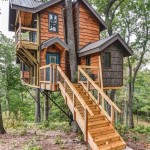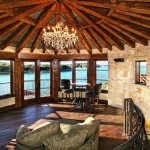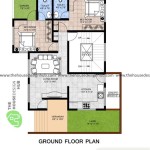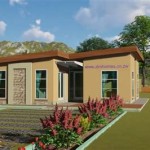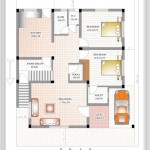Lake House Plans for Sloped Lots
Building a lake house on a sloped lot presents unique design challenges and opportunities. Proper planning is crucial to maximize the views, minimize environmental impact, and create a functional and aesthetically pleasing home. This article explores important considerations for designing and building a lake house on a sloped lot, from foundation choices to maximizing usable outdoor space.
Foundation Options for Sloped Lots
Choosing the right foundation is paramount for stability and longevity. Several options exist, each with its own advantages and disadvantages. A walkout basement foundation is a popular choice for sloped lots. This type of foundation utilizes the slope to create a lower level that opens directly to the backyard, providing additional living space and maximizing the lake view from multiple levels. A crawl space foundation is another option, offering a cost-effective solution for sloped terrains while still providing ample under-house storage. However, crawl spaces may require careful design to ensure proper ventilation and moisture control. Finally, a slab-on-grade foundation, often used on flatter lots, can be adapted for gentle slopes with proper grading. This option tends to be the most economical but may limit lower-level living space potential.
Maximizing Views and Outdoor Living
One of the primary benefits of a lakefront property is the inherent connection to nature. Lake house plans for sloped lots should capitalize on this by maximizing views and creating seamless transitions between indoor and outdoor living spaces. Decks and patios built on multiple levels, following the contours of the slope, can provide distinct outdoor areas for dining, lounging, and entertaining. Large windows and sliding glass doors can blur the lines between indoors and out, while strategically placed balconies and terraces can further enhance the panoramic views. Consider incorporating a screened porch or covered patio to extend the usability of these spaces during inclement weather. Additionally, thoughtful landscaping with native plants can enhance the natural beauty of the surrounding environment and minimize erosion.
Addressing Drainage and Erosion Control
Sloped lots are particularly susceptible to drainage issues and erosion. Careful planning and implementation of effective drainage solutions are vital to protect the structural integrity of the house and prevent damage to surrounding property. Proper grading directs water flow away from the foundation, minimizing the risk of water intrusion and soil erosion. Retaining walls can be strategically placed to terrace the slope, creating level areas for landscaping and outdoor living while simultaneously mitigating erosion. French drains, swales, and dry wells can further enhance drainage, directing excess water away from the house and into designated areas. Consulting with a geotechnical engineer can provide valuable insights into the specific drainage and erosion control measures needed for the particular site conditions.
Driveway Design and Access
Access to the house on a sloped lot requires thoughtful driveway design. A winding driveway that gradually ascends the slope can minimize the steepness and improve safety. Switchbacks may be necessary for steeper slopes to create a more manageable incline. The choice of driveway materials, such as asphalt, concrete, or gravel, should consider factors like cost, maintenance, and aesthetic appeal. Proper drainage for the driveway is also crucial to prevent erosion and damage during heavy rainfall. Consider incorporating a turnaround area near the house for convenient vehicle access and maneuvering.
Septic System Considerations
If the lake house is not connected to a municipal sewer system, a properly designed and installed septic system is essential. Sloped lots can present challenges for septic system placement due to the need for adequate drainage and separation from the water table. Consult with a septic system professional to determine the best location and type of system for the site. Soil testing is typically required to evaluate the soil's permeability and ensure the system can effectively treat wastewater. Careful consideration should be given to the location of the septic system in relation to the house, well, and property lines.
Utilizing Natural Light and Ventilation
Taking advantage of natural light and ventilation can enhance energy efficiency and create a more comfortable living environment. Clerestory windows, strategically placed high on walls, can bring in ample natural light while maintaining privacy. Operable windows and skylights can promote natural ventilation, reducing the reliance on air conditioning. Orienting the house to maximize solar gain in the winter and minimize it in the summer can further improve energy efficiency. Consider incorporating passive solar design principles, such as thermal mass and shading devices, to regulate indoor temperatures.

A Guide To Sloping Lot House Plans

Looking For The Perfect Affordable Cottage With A Large Covered Balcony Plan 1143

Plan 64452sc House For A Rear Sloping Lot Architectural Design Plans Lake

Lake Wedowee Creek Retreat House Plan

Hillside And Sloped Lot House Plans

House Plans For A Sloped Lot Dfd Blog

The Best House Plans For Sloped Lots And Narrow Houseplans Blog Com

3 Bedroom Small Sloping Lot Lake Cabin By Max Fulbright House Plans Houses

3 Bedroom Small Sloping Lot Lake Cabin By Max Fulbright

The Perfect Lake House Designs For Your Lot Don Gardner Architects


